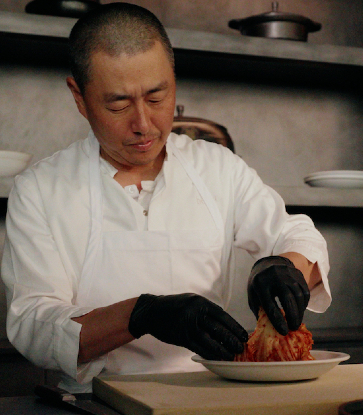
In French cooking, stock is called le fond, which translates to ‘the foundation’. Indeed, one cannot underestimate the power and depth of flavour that a good fresh stock adds to food.
Emmanuel Stroobant, chef-owner of two MICHELIN-starred restaurant Saint Pierre in Singapore expounds: “A good stock is the soul and building foundation of any sauce. It also plays an important role for base flavour, braising liquid and seasoning. It is the essence of classic French cooking and all great chefs are first great sauciers!”
Though stocks can be made from any number of vegetables and meats, nothing quite encapsulates the soul of French cuisine as well.
as a classic veal stock, a bouillon that chef Emmanuel uses in countless sauces at his restaurant from Bordelaise (used in this dish of Garoupa ikejime with agria potato, black olive and beurre de poisson, see top left picture) and Poivrade to Madère and Colbert.
While veal stock is considered the backbone of French culinary tradition, it is almost never used in home cooking. It is a shame though, because it is no more difficult to cook up a batch of veal stock as it is to make chicken stock and the results are so worth it.

The trick to good stock, he says, is low and slow. “It is simple, but a good stock requires time and attention to reduce, develop and gradually increase in flavour. At home, I simply allow the stock to slowly reduce overnight for a more intense flavour, and it also makes my house smell really nice in the morning.”
Once you’ve made a big batch of this stock, chef Emmanuel recommends freezing it in small individual packages (try ice cube trays) because they keep well in the freezer for a long time and you only need a small amount each time for sauces or seasoning.
Emmanuel Stroobant’s Veal Stock
Ingredients
- 100ml vegetable oil
- 6kg veal bones
- 6 tbsp tomato paste
- 7 large carrots, peeled and cubed (about 3cm)
- 5 large onions, peeled and cubed (about 3cm)
- 2 bulbs garlic, peeled and crushed
- 7 stalks celery, peeled and cut into 3cm lengths
- 3 leeks, peeled and cut into 3cm lengths
- 6 litres cold water
- 2 tsp black peppercorn, whole
- 25g fresh thyme
- 4 bay leaves
- 50g fresh parsley
- 700ml red wine
Method
- Preheat oven to 225°C. Toss veal bones with vegetable oil. Roast on a roasting tray for 45-60 minutes or until the bones turn brown on all sides.
- Add the tomato paste, carrots, onions, garlic, celery and leek, and turn the bones half way through. Roast for another 15 minutes. Discard the excess oil from the roasting tray.
- Remove the bones and vegetables from the roasting tray and place them in a stock pot.
- Place the tray over medium-high heat and deglaze the roasting tray with red wine. Scrape off the bits from the bottom of the tray and move it around to help the wine reduce.
- Once the wine has reduced to a syrup consistency, pour into the stock pot.
- Add cold water to cover the bones and vegetables by at least 5cm. Simmer for approximately 8 to 10 hours in a slow cooker, skimming and adding more cold water to ensure the bones remain submerged in water.
- 30 minutes before the stock is finished, add black peppercorn, thyme, bay leaves and parsley.
- Strain and use, or store in smaller batches in the freezer.





















